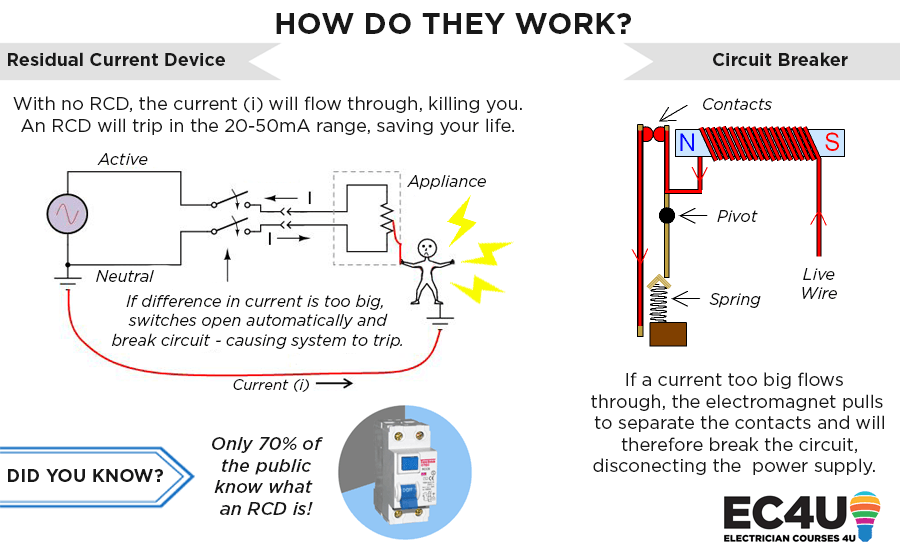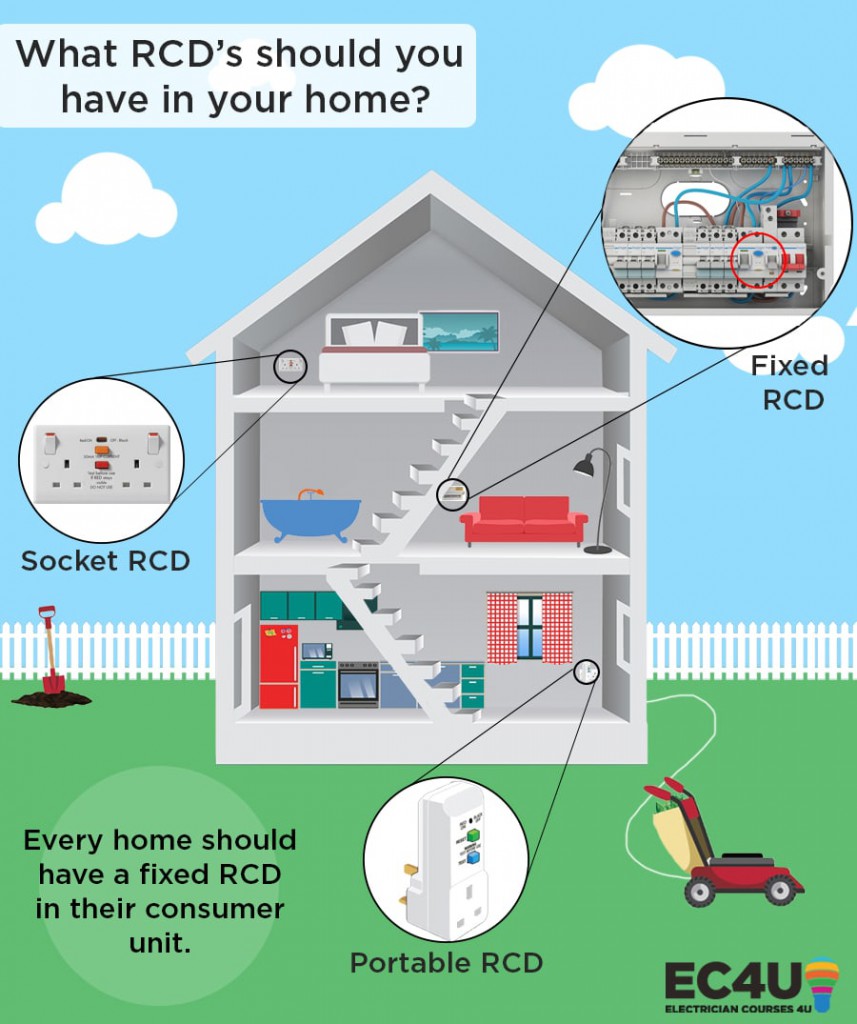How RCD’s and circuit breakers can save your life

Every home should be fitted with an RCD and circuit breakers to protect you and your family. But what are they and what are the benefits of having them in the home? What different types of RCD are available? How can they save your life?
What is an RCD?
A Residual Current Device (RCD) is a crucial safety device that every home should have. They are constantly monitoring the electrical current flowing through the circuit. They also work by sensing if there is a fault with the electrical system by switching off the flow of electricity automatically and quickly enough to prevent injury from electrocution. and will then close off the electricity too.
The technical part of a RCD is that they work on the current balance principle. This means that the electrical current meeting at any point in the circuit must be zero to stay in full working condition. If a fault occurs and the phase and neutral current become unbalanced, the current will flow to earth and the RCD will detect this fault and cut the power immediately.
What is a Circuit Breaker?
Circuit breakers are another device that every home should have. They are part of your consumer unit and very important to fire safety, as they protect all circuits. They work by detecting changes in the current between live and neutral wires and prevent circuit overloads by switching off when there is a surge/overload. In the home, there are multiple circuit breakers, one for each electrical circuit. If a circuit breaker trips, get an electrician out to correct the fault and only then can you reset the switch.
Different types of RCD protection
Fixed RCDs
These can be found in your consumer unit and they provide protection to groups or individuals of circuits. Having a fixed RCD within your consumer unit (fuse box), gives you the ultimate protection for your home. The RCD constantly monitors and protects all the socks on the circuit and will detect any faults that arise.
Socket RCDs
This is a specially designed plug socket, which has an in-built RCD. They are different from the standard socket outlet. This form of RCD only protects the person in contact with the appliance plugged into the RCD socket.
Portable RCDs
An alternative to a socket RCD, these adapters are simple and easy to use, and interchangeable for location. It plugs into any standard socket outlet, which you then plug your appliance into it. A common use for this type of RCD is for outdoor appliances, such as lawn mower and hedge trimmer, to help protect the user from potentially cutting the electrical lead and getting electrocuted, by switching off the power automatically.
How a Residual Current Device can save your life
The most important and common form of RCD to have in your home is a fitted RCD inside your consumer unit and its purpose is to help prevent danger in the event of a fault. If fitted, you can rely on it to reduce the risk of electric shocks and potential fire damage to the home caused by unearthed appliances and faulty wiring. They are designed to provide a high level of protection to prevent electrocution or electrical fires by cutting off the flow of electricity automatically when it senses a path to earth. A path to earth can occur when a person touch a live element or metal conductive part of the electrical system, such as running over a cable with a lawn mower.
How Circuit Breakers can save your life
Circuit breakers monitor any changes in live and neutral wires and aid prevention of circuit overloads. Simply, whenever there is too much current flowing through the electrical wiring in the home, circuit breakers cut the power. The it’s best practice to call out a registered electrician to take a look at the circuit overload. They are a necessity in the home because without them, the risk of fire and other damages would be much greater.
Common problems with RCD’s
If your RCD or circuit breakers trip, do not use the electrical system until it has been checked. RCDs are designed to detect faults in the system and automatically trip for your safety. Consult a registered, qualified electrician to test and eliminate any possible risk in the system.
RCD testing
Never assume the RCD continuously works. It’s important to carry out regular RCD testing. You should test portable RCD every time you use them, to make sure there are in full working order. With Fitted RCD inside the consumer unit and fitted RCD sockets, you must test them every 3 months.






